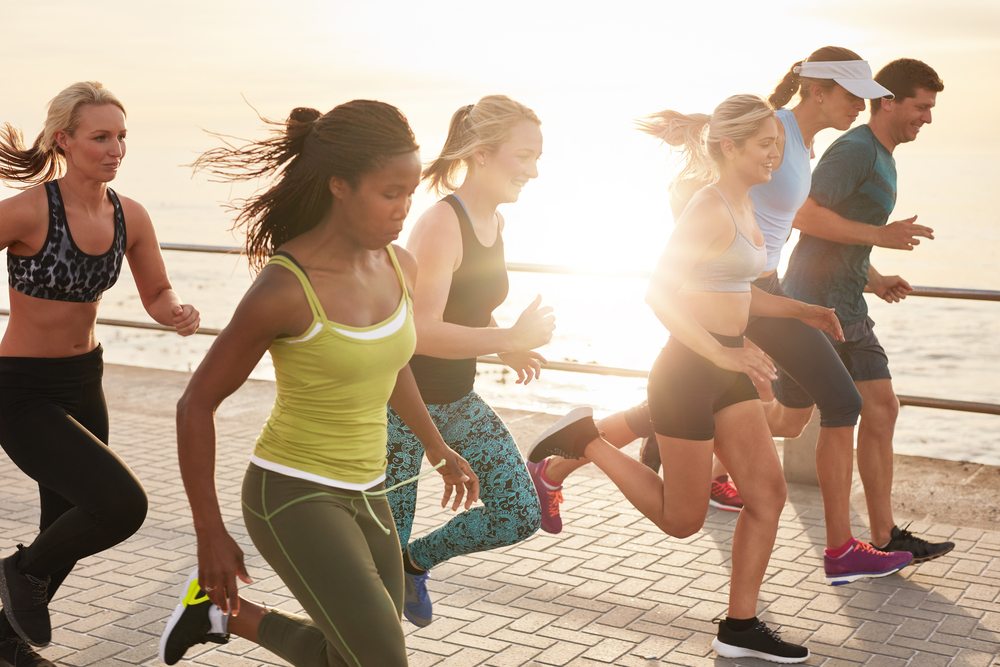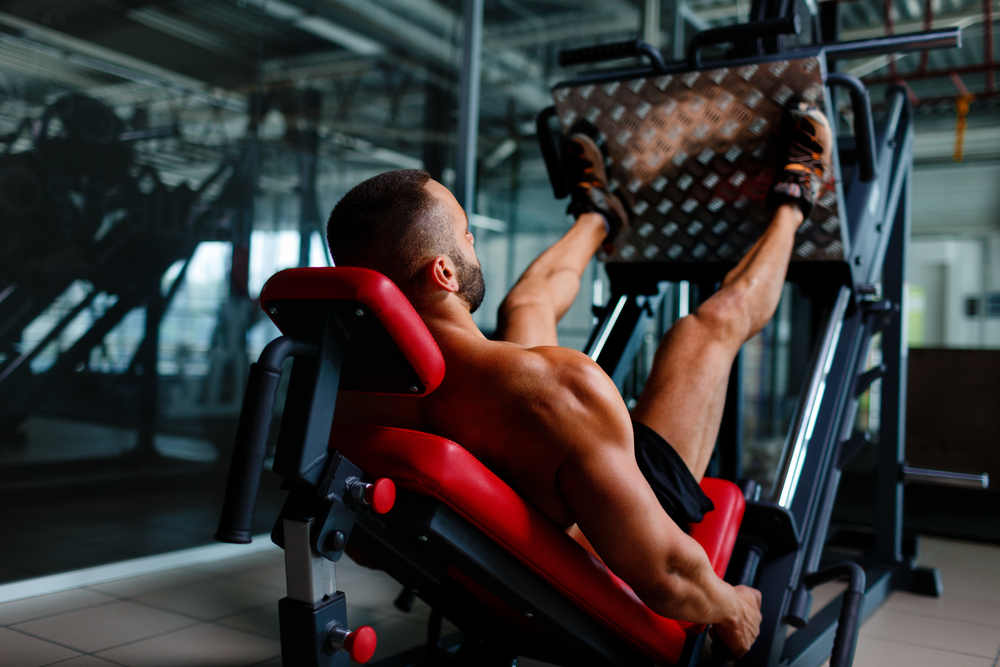If you are a running fanatic, you may be wondering if running is a good workout for your legs. Logically, this would make sense. Many people think that since your legs are working, it must be a leg workout. Running involves moving your legs back and forth, which you would assume would be quite the workout.
Running is not considered a leg workout because it will not strengthen your legs. Leg workouts include exercises such as squats, lunges, deadlifts, and calf raises. However, running will strengthen your joints and tone your legs. Additionally, running is recommended after a leg workout. By increasing blood flow, your muscles will receive the nutrients they need for recovery.
In this article, we will discuss the dynamics of running, what makes a leg workout, and different leg workouts you can do to strengthen your running abilities.
Contents
Does Running Count as a Leg Workout?
Running is considered a cardiovascular workout, not a leg workout. Many people might be confused about this because your legs are working while running. It is important to note that running will strengthen your joints and tone your legs. But, replacing your “leg day” at the gym with a running workout will not produce the same results. Let’s talk about why.
When running, we do not put a lot of strain on our muscles. Running may seem hard, but it is because of the cardiovascular element. Your legs can run for long distances, but your heart and lungs are the ones being stressed. Endurance is the skill being strengthened when you run. However, your muscles will not be stronger following a run.
Weighted exercises create resistance which your muscles work to meet the demand. As you continue these training exercises, your muscles grow mass and are able to take more weight. This is the process of becoming stronger. Through training, your body becomes stronger.
Is It Okay to Run After Leg Workout?
Not only is it okay to run after a leg workout, but it is also recommended! Pairing your strength workout with cardio is a surefire way to reach your goals. Running after leg day, even lightly, will promote recovery.
Running will get the blood flowing through your legs. By increasing the blood flow, your muscles will receive the nutrients they need for recovery. This will relieve the soreness you might feel and leave your muscles feeling at ease. Next time you complete a leg day, try adding a light running session of 10 minutes. As time goes on, you’ll be able to run for longer following your workouts.
Leg Workouts
There are many benefits to incorporating strength training into your routine. There are certain exercises that will increase your running abilities. Below is a list of leg workouts geared for runners. For example, as you run, you are always balanced on one leg. (This is why most of the movements below focus on balance training.)
Squats

The quadriceps, hamstrings, hip flexors, calves, and glutes are worked during squats. These are the majority of the leg muscles. This workout promotes mobility and balance. Squats are a classic movement with numerous benefits. They can be done with body weight or added weight. There are many variations of a squat, such as goblet squats, air squats, front rack squats, etc.
Single-Leg Deadlift

A single-leg deadlift has all the benefits of a regular deadlift when it comes to strengthening the leg muscles, with the added benefit of balance training. Deadlifts are shown to reduce lower back pain, activate the core, and improve mineral density.
Lunges

Lunges are a powerhouse movement because they use so many of our muscles. Abdominals, back muscles, glutes, quadriceps, hamstrings, and calves all come into play during a lunge. Additionally, they incorporate balance. Which as we know, is key when running.
Calf Raises

This exercise can be geared to be more or less intense. The less intense version is simply standing and raising up on your tip toes while squeezing your calves. For added burn, hold weight and stand your toes on a slightly elevated surface while leaving your heels on the ground. Strong calves are linked to faster running.
Good Mornings

This is a simple but effective movement. Standing with feet hip-width apart, hinge forward until you feel the strain in your hamstrings. This exercise works not only your hamstrings and glutes but your back muscles as well. Good mornings are considered the best movement to prevent injuries.
How to Improve Leg Strength at Home
Most runners, especially those that run outdoors, are used to a free workout routine that usually doesn’t incorporate other individuals. As a runner, you may be looking to improve your leg strength but are not interested in going to a gym.
The great thing about the movements listed above is that each of them can be done with added weights, or with body weight. The ability to have an effective workout using just your body weight means it can be done anywhere. If you do not have time to make it to the gym, try doing a few circuits of the movements above at home.
You’d be surprised how effective a few rounds of squats can be.
Working out at home is also a great alternative for those who do not feel comfortable using a gym. Confusing machines and crowds of people can be intimidating for some. Not to mention, paying a monthly membership only to feel anxiety.
Running Legs vs. Lifting Legs
There is a contrast between running legs and lifting legs. If you have ever paid attention to the physique of those who primarily run and those who incorporate strength training, you’ve probably noticed a difference in those two bodies. Different training equals different results.
Running Legs
Running will tone your legs and does make them stronger. However, not grow muscle in the way that strength training can. Typically, runners have sleek, smaller bodies. Compared to those who strength train, with pronounced muscles. This is because running reduces the presence of fat in the body. A running session will train your leg muscles only to the extent of running.
Lifting Legs
Strength training will increase the size of your muscles and the power behind them. Leg workouts create small tears in the muscle. During recovery, your body produces more muscle fibers to repair the tears. This results in more muscle mass as training progresses, resulting in a look of larger muscles.
Benefits of Strength Training
Strength training is beneficial for runners of every distance. Whether you enjoy a quick 5k or a full marathon, a “leg day” should be part of your routine.
- Building leg strength will help maintain proper form when running and help prevent injuries.
- Balance, posture, and mobility are all key elements to running that strength training plays a big part in.
- You could have poor balance when running, leading to a fall and ultimately an injury.
- Increasing muscle coordination can improve running power and efficiency.
- By increasing your coordination, your body will be able to contract and use muscles in a more coherent way.
- This will result in a faster, more dynamic running session.
If you are a runner looking to boost your performance, you should be doing a strength training session twice per week. Research has shown that the sweet spot is two to three times per week. Still, if you can only squeeze in once a week that will have positive benefits too.
Leg Workout Tips
“Leg day” has a reputation among gym-goers as being dreadful. To a newbie, this could be intimidating. Even as a seasoned strength trainer, you can be doing leg day ineffectively. An ineffective workout is not only a waste of time and energy but can be dangerous as well. Here are a few tips to be successful during your leg workouts:
1. Focus on Form, Not Weight
Getting the proper form mastered on any movement is the most important part. Loading up the rack with weights because you can, only to do a movement completely wrong, will have little benefit and will most likely lead to an injury.
If you need to start with no weights, there’s no shame in that.
2. Split Up Your Workout
Part of the reason why leg day is so dreaded is that the workouts are very demanding. If your body can’t handle that much training, split it up! It’s better to execute the movements with 100% force and quit earlier than intended than drag on with minimal effort behind your training.
Try focusing on hamstrings in one training session, and quads in the other.
3. Train Your Mind First
Before starting your training session, get your mind right. Whether that’s planning out your workout, taking a few deep breaths, or listening to your favorite song. Your workout will always be better when you are in the right headspace.
To train to your best level, stay focused and positive!



